- You cannot add "Inside Out: The True Story Of The Simmonds-Newcombe Gaol Escape: Les Newcombe" to the cart because the product is out of stock.
-
 Ron Williamson was a star college sportsman in the small town of Ada, Oklahoma. When he left to pursue his dreams he seemed destined for glory. But years of injury, drinking, drugs and women took their toll, and he returned to Ada a lonely drifter. Soon after his homecoming, a local cocktail waitress was raped and murdered. With no immediate leads, the police worked the case for five years before arresting Williamson and charging him with her murder. Despite no physical evidence, and based largely on the testimony of jailhouse snitches, he was found guilty at trial and sent to death row. Left to await his fate, Williamson was the only person to know the terrible truth: that an innocent man had been sent on a journey to hell. A journey from which he might never return...Illustrated with black and white photographs.
Ron Williamson was a star college sportsman in the small town of Ada, Oklahoma. When he left to pursue his dreams he seemed destined for glory. But years of injury, drinking, drugs and women took their toll, and he returned to Ada a lonely drifter. Soon after his homecoming, a local cocktail waitress was raped and murdered. With no immediate leads, the police worked the case for five years before arresting Williamson and charging him with her murder. Despite no physical evidence, and based largely on the testimony of jailhouse snitches, he was found guilty at trial and sent to death row. Left to await his fate, Williamson was the only person to know the terrible truth: that an innocent man had been sent on a journey to hell. A journey from which he might never return...Illustrated with black and white photographs. -
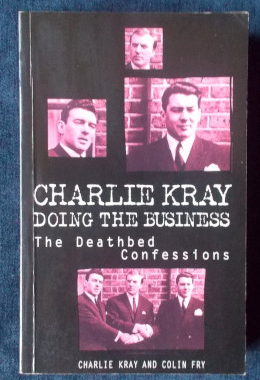 Until the release of this book, no-one had ever revealed the truth about the Krays. Gossip and rumour have been rife, fact has blended into fiction. Only one man knew everything about the fearsome twins, but the law of the streets dictated that he kept it all a secret. Before his death. Charlie Kray revealed everything to his co-writer Colin Fry. He wanted to set the record straight once and for all. He made his deathbed confessions, revealing the in credible truth about the Kray Firm. Mixing their peculiar blend of glamour and terrifying violence, this is the final great story of the Krays - told by the man who knew them best. Illustrated with black and white photographs. https://cosmiccauldronbooks.com.au/p/frances-kray-tragic-bride-jacky-hyams/
Until the release of this book, no-one had ever revealed the truth about the Krays. Gossip and rumour have been rife, fact has blended into fiction. Only one man knew everything about the fearsome twins, but the law of the streets dictated that he kept it all a secret. Before his death. Charlie Kray revealed everything to his co-writer Colin Fry. He wanted to set the record straight once and for all. He made his deathbed confessions, revealing the in credible truth about the Kray Firm. Mixing their peculiar blend of glamour and terrifying violence, this is the final great story of the Krays - told by the man who knew them best. Illustrated with black and white photographs. https://cosmiccauldronbooks.com.au/p/frances-kray-tragic-bride-jacky-hyams/ -
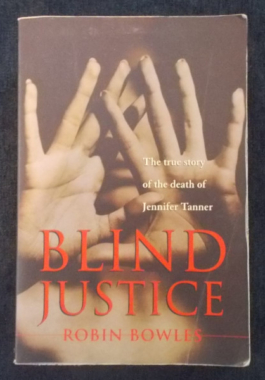 In 1996 Robin Bowles, a Melbourne company director, read a newspaper report about a task force that had been set up to re-investigate the circumstances surrounding the alleged suicide of Victorian country housewife Jennifer Tanner.The reason for the renewed interest was the the discovery of human remains in a mineshaft near the property where Jenny had died. Deeply puzzled by the mass of anomalies in the case, Robin went searching for answers. How, for instance, could Jenny have shot herself twice in the brain- after shooting both her hands first? Since there was no note nor proof of intention, could the findings from the original post-mortem have been influenced by other parties? And was Jenny's death connected to the body in the mine? What unfolds is a bizarre tangle of police bungles, cover-ups and family intrigue.
In 1996 Robin Bowles, a Melbourne company director, read a newspaper report about a task force that had been set up to re-investigate the circumstances surrounding the alleged suicide of Victorian country housewife Jennifer Tanner.The reason for the renewed interest was the the discovery of human remains in a mineshaft near the property where Jenny had died. Deeply puzzled by the mass of anomalies in the case, Robin went searching for answers. How, for instance, could Jenny have shot herself twice in the brain- after shooting both her hands first? Since there was no note nor proof of intention, could the findings from the original post-mortem have been influenced by other parties? And was Jenny's death connected to the body in the mine? What unfolds is a bizarre tangle of police bungles, cover-ups and family intrigue. -
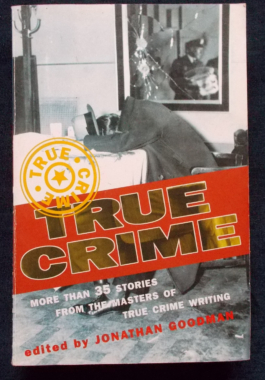 More than 35 accounts of notorious cases and lurid curiosities from the history of crime, described by criminology's most distinguished authors. In this volume: The murder of John Lennon; The rise and fall of Al Capone; The pathologist's account in the Nilsen case; Damon Runyan at a gangster's trial; Edgar Wallace at the scene of a crime; Abraham Lincoln's assassination; A hanging judge's diary; the death of Jesse James; The guillotining of Henri Landru; Jack the Ripper's real identity; W.M. Thackery: On Going To A Hanging; James Turber on a Broadway Gambler's demise; Edmund Pearson's Notes For Murderesses; the first electrocution at Sing Sing - and more.
More than 35 accounts of notorious cases and lurid curiosities from the history of crime, described by criminology's most distinguished authors. In this volume: The murder of John Lennon; The rise and fall of Al Capone; The pathologist's account in the Nilsen case; Damon Runyan at a gangster's trial; Edgar Wallace at the scene of a crime; Abraham Lincoln's assassination; A hanging judge's diary; the death of Jesse James; The guillotining of Henri Landru; Jack the Ripper's real identity; W.M. Thackery: On Going To A Hanging; James Turber on a Broadway Gambler's demise; Edmund Pearson's Notes For Murderesses; the first electrocution at Sing Sing - and more. -
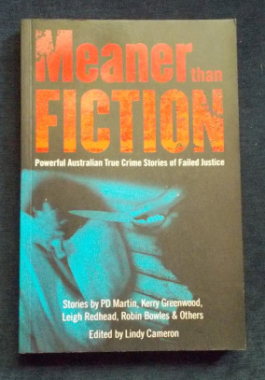 Just where is justice in Australia hiding? This brilliant new collection of true crime stories takes us into the Australian courts of the 1980s and '90s, back in time to the goldfields of the 1860s, and out to the island nation of Nauru in 2006 to explore how the scales of justice are unbalanced. This is a world in which the innocent still get locked up and the guilty too often go free. This collection is a must for all lovers of true crime. It will shock, outrage and intrigue. Features: Robin Bowles charts a mysterious case of sudden death; Lindy Cameron on the random shooting of Dr Andrew Taylor; Kathryn Deans on Heather Osland and how 13 years of torture was just the start of her ordeal; Liz Filleul on the disappearance of Elisabeth Membrey; Kerry Greenwood examines the role that crime writers have played in redressing miscarriages of justice; PD Martin on the Innocence Project, and Andrew Mallard; Susan Metcalfe on the tragedy of two Iraqis left behind on Nauru; Leigh Redhead asks how a man who secretly filmed his flatmates got away with it; Shelley Robertson, a modern forensic pathologist, questions the 'whole truth' of expert testimony; and Lucy Sussex on the unfortunate author Mary Fortune.
Just where is justice in Australia hiding? This brilliant new collection of true crime stories takes us into the Australian courts of the 1980s and '90s, back in time to the goldfields of the 1860s, and out to the island nation of Nauru in 2006 to explore how the scales of justice are unbalanced. This is a world in which the innocent still get locked up and the guilty too often go free. This collection is a must for all lovers of true crime. It will shock, outrage and intrigue. Features: Robin Bowles charts a mysterious case of sudden death; Lindy Cameron on the random shooting of Dr Andrew Taylor; Kathryn Deans on Heather Osland and how 13 years of torture was just the start of her ordeal; Liz Filleul on the disappearance of Elisabeth Membrey; Kerry Greenwood examines the role that crime writers have played in redressing miscarriages of justice; PD Martin on the Innocence Project, and Andrew Mallard; Susan Metcalfe on the tragedy of two Iraqis left behind on Nauru; Leigh Redhead asks how a man who secretly filmed his flatmates got away with it; Shelley Robertson, a modern forensic pathologist, questions the 'whole truth' of expert testimony; and Lucy Sussex on the unfortunate author Mary Fortune. -
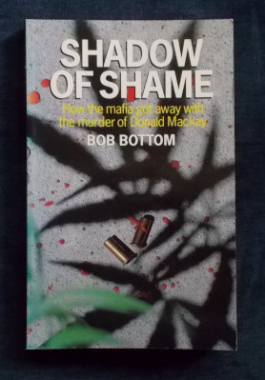
Shadow Of Shame: Bob Bottom
$12.00Donald Bruce MacKay, the Griffith anti-drugs campaigner, disappeared without trace from the carpark of the Griffith Hotel in July 1977. Mackay had been a secret informant for polce against illicit growing of marijuana growing in the Riverina area. His ‘disappearance’ became Australia’s first political assassination. This is the shocking story of how the mafia planned and executed his murder. Throughout the shameful decade that followed, some people, even at senior levels of politics and law enforcement, connived to cover up this mafia murder. Bob Bottom, a crime journalist, traces the birth and growth of the mafia in Griffith, known to police as a centre for serious crime as early as the 1930s. By the 1970s, when Mackay first became concerned about illicit drug activities in his town, those controlling organised crime had become far more sophisticated. Bribery, corruption and pay-offs had become commonplace. Serious questions about NSW police investigations into Australia’s most notorious murder precipitated a special commission of enquiry – nine years later...Bottom also details how drug boss Robert Trimbole lived safely in Spain despite international police knowledge of his whereabouts and of the failure of Australian authorities to bring him to justice. Illustrated with black and white photographs. -
 Chapters include: Gangs And Gangsters: Al Capone, Frank Costello, Jo Adonis, the Messinas, the Krays and the Mafia; City Cases: Whitaker Wright, Lord Kylsant, Clarence Hatry, Horatio Bottomley, The Lynskey Tribunal, Ferdinand Lesseps, the Teapot Dome; Political Murders: Spencer Percival, the attempt on Lloyd George, John F. Kennedy, William McKinley, James A. Garfield, Abraham Lincoln, Rasputin, Mussoline and Mateotti; Kidnapping: Elizabeth Canning, the Lindbergh baby, James Cross, Pierre Laporte, Samuel Bronfman, Muriel McKay; Pleas Of Insanity: Lieutenant Holt, Colonel Rutherford, Ronald True, Dale Nelson, Leopold and Loeb, Harry Thaw; Sex Crimes: Alfred Whiteway, Edward Paisnel, Peter Griffiths, Patrick Byrne, Albert DeSalvo, Fritz Haarmann, Gaston Domincini; Cases Unsolved: Jack the Ripper, Mrs Caroline Luard.
Chapters include: Gangs And Gangsters: Al Capone, Frank Costello, Jo Adonis, the Messinas, the Krays and the Mafia; City Cases: Whitaker Wright, Lord Kylsant, Clarence Hatry, Horatio Bottomley, The Lynskey Tribunal, Ferdinand Lesseps, the Teapot Dome; Political Murders: Spencer Percival, the attempt on Lloyd George, John F. Kennedy, William McKinley, James A. Garfield, Abraham Lincoln, Rasputin, Mussoline and Mateotti; Kidnapping: Elizabeth Canning, the Lindbergh baby, James Cross, Pierre Laporte, Samuel Bronfman, Muriel McKay; Pleas Of Insanity: Lieutenant Holt, Colonel Rutherford, Ronald True, Dale Nelson, Leopold and Loeb, Harry Thaw; Sex Crimes: Alfred Whiteway, Edward Paisnel, Peter Griffiths, Patrick Byrne, Albert DeSalvo, Fritz Haarmann, Gaston Domincini; Cases Unsolved: Jack the Ripper, Mrs Caroline Luard. -
 The Goatfell Murder: Near the summit of Goatfell, the body of Edwin Robert Rose was found stuffed under a granite boulder on 28 July 1889. He was a 32-year-old builder's clerk from London who had last been seen alive on the mountain a fortnight before. His head and face had been brutally smashed, probably by rocks. The last person seen in his company, a 26-year-old engineering worker known as John Annandale, was nowhere to be found. Annandale's real name was John Watson Laurie, a pattern maker for a Glasgow locomotive firm. He was caught by police two months later and at the end of a two-day trial under an impatient judge he was found guilty of murder, despite the lack of forensic evidence or any witnesses to the deed. But was there a miscarriage of justice? The Ardlamont Mystery: Alfred John Monson began working as a gentleman's tutor for the Hambrough family in 1891. In 1893 he took the lease on the Ardlamont estate in Argyll for the shooting season. On 10 August he took Windsor Dudley Cecil Hambrough, his 20-year-old pupil, for a day's hunting in an area of woodland. A third man joined them, Edward Scott, a friend of Monson. Estate workers heard a shot, then saw Monson and Scott running to Ardlamont House carrying the guns. Monson alleged that Hambrough had shot himself in the head by accident while climbing a fence. But with very large insurance policies having been taken out less than a week before... John Donald Merrett: He was tried for the murder of his mother, Bertha Merrett. It was at first believed that she had committed suicide - but it was discovered that Merrett had been defrauding her. His defence was skilful and the Jury returned a verdict of "Not Proven". Not proven - but was he innocent? The Portencross Murder: Mary Gunn, her sister Jessie McLaren and her sister's husband Alex McLaren were enjoying a quiet evening at an isolated cottage when six shoots were fired. Jessie and Alex were wounded - but Mary was dead. The family lived quietly; and were considered to be 'well-off' in the locality. The only clues were six footprints, a few spent bullets and evidence that a stranger had been asking the way to Portencross...
The Goatfell Murder: Near the summit of Goatfell, the body of Edwin Robert Rose was found stuffed under a granite boulder on 28 July 1889. He was a 32-year-old builder's clerk from London who had last been seen alive on the mountain a fortnight before. His head and face had been brutally smashed, probably by rocks. The last person seen in his company, a 26-year-old engineering worker known as John Annandale, was nowhere to be found. Annandale's real name was John Watson Laurie, a pattern maker for a Glasgow locomotive firm. He was caught by police two months later and at the end of a two-day trial under an impatient judge he was found guilty of murder, despite the lack of forensic evidence or any witnesses to the deed. But was there a miscarriage of justice? The Ardlamont Mystery: Alfred John Monson began working as a gentleman's tutor for the Hambrough family in 1891. In 1893 he took the lease on the Ardlamont estate in Argyll for the shooting season. On 10 August he took Windsor Dudley Cecil Hambrough, his 20-year-old pupil, for a day's hunting in an area of woodland. A third man joined them, Edward Scott, a friend of Monson. Estate workers heard a shot, then saw Monson and Scott running to Ardlamont House carrying the guns. Monson alleged that Hambrough had shot himself in the head by accident while climbing a fence. But with very large insurance policies having been taken out less than a week before... John Donald Merrett: He was tried for the murder of his mother, Bertha Merrett. It was at first believed that she had committed suicide - but it was discovered that Merrett had been defrauding her. His defence was skilful and the Jury returned a verdict of "Not Proven". Not proven - but was he innocent? The Portencross Murder: Mary Gunn, her sister Jessie McLaren and her sister's husband Alex McLaren were enjoying a quiet evening at an isolated cottage when six shoots were fired. Jessie and Alex were wounded - but Mary was dead. The family lived quietly; and were considered to be 'well-off' in the locality. The only clues were six footprints, a few spent bullets and evidence that a stranger had been asking the way to Portencross... -
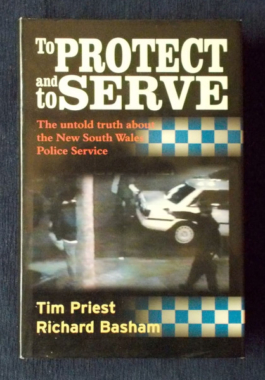 Almost every month in New South Wales, there are reports of police corruption and a police service under attack, from the criminals it tries to put away and the people it tries to protect and serve. Are the reports mere media sensationalism, or is the New South Wales Police in serious trouble? And if so, where did it go wrong? Priest was a cop who loved his job and gave everything he had to fight crime on the drug-ridden streets of Cabramatta. Yet he found his biggest battle was not with the drug gangs but with the very service he worked for. Eventually he could stand it no longer and spoke out about the bizarre policy decisions, politics, bureaucratic bungling and chronic lack of resources. For this he was labelled a whistle-blower and ultimately railroaded out of the police force. Yet a parlimentary enquiry and the testimony of other officers proved that Tim was not only telling the truth, but this was only the tip of the iceberg of what is really wrong with the New South Wales Police Force. While crime continues to spiral out of control, morale plummets among the rank and file police and experienced cops find they are at the mercy of a promotion system that leaves them nowhere to go but out. Tim teams up with Richard Basham, a man of vast experience through his involvement in a number of advisory boards, criminal investigations and personal friendships with ordinary cops, to reveal the untold story of the police service.
Almost every month in New South Wales, there are reports of police corruption and a police service under attack, from the criminals it tries to put away and the people it tries to protect and serve. Are the reports mere media sensationalism, or is the New South Wales Police in serious trouble? And if so, where did it go wrong? Priest was a cop who loved his job and gave everything he had to fight crime on the drug-ridden streets of Cabramatta. Yet he found his biggest battle was not with the drug gangs but with the very service he worked for. Eventually he could stand it no longer and spoke out about the bizarre policy decisions, politics, bureaucratic bungling and chronic lack of resources. For this he was labelled a whistle-blower and ultimately railroaded out of the police force. Yet a parlimentary enquiry and the testimony of other officers proved that Tim was not only telling the truth, but this was only the tip of the iceberg of what is really wrong with the New South Wales Police Force. While crime continues to spiral out of control, morale plummets among the rank and file police and experienced cops find they are at the mercy of a promotion system that leaves them nowhere to go but out. Tim teams up with Richard Basham, a man of vast experience through his involvement in a number of advisory boards, criminal investigations and personal friendships with ordinary cops, to reveal the untold story of the police service.


